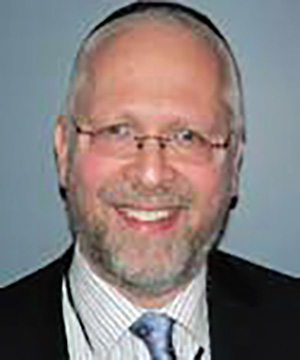
The raison d’etre of Jewish day schools is to provide a quality education in the areas of Torah and wisdom studies. This, rightfully, generates ambitious expectations on the part of the parents, students, teachers and broader community as to what knowledge and skills we should expect our students to master. An oft-cited example in this regard is Ivrit. Students who benefit from a day school education should be fluent in Hebrew by the time they graduate middle school.
But this is not the only area of Jewish education in which we should expect mastery by our students. The Mishnah in Avot (5:21) famously proclaims “Ben chamesh l’mikra”—at five years old one should begin learning the written Torah, after which the Mishnah lists other ages—the next one being 10 years old, for educational and various life accomplishments. The implication of this statement is that, at least on a certain level, students should know the written Torah in its entirety at this tender point in their educational development, between the ages of five and 10. In fact, in the curricula of some of the Rishonim, the classic early commentators, students did learn all of Tanach before they proceeded on to the Mishnah and Gemara.
Now, most, if not all, of our students in elementary and middle school grades know the narratives and lessons of Avraham and Sarah, of Moshe and Aharon, of Yehoshua and the Shoftim, and of Shmuel and David—from the wonderful parsha, Chumash and Navi classes they have. But how many of our students are fluent in the narratives and lessons of Chizkiyahu and Yoshiyahu, of Daniel and Zerubbavel, and of Ezra and Nechemiah? These, too, are an integral part of the foundation of the written Torah and our heritage; yet, in many cases, there are gaping holes in the knowledge of the students in Diaspora Jewish day schools in these areas. Knowledge of and love for the entirety of this part of Torah should not be limited to those few who elect to participate in the Chidon HaTanach. This is the rightful heritage of all our children.
To address this point, at BPY we have designed an exciting, innovative program that we will be launching, b’ezrat Hashem, this coming September. Under the masterful and creative direction of Rabbi Hayyim Angel, Tanach education scholar at BPY, Yeshiva University professor of Tanach, and the National Scholar of the Institute for Jewish Ideas and Ideals, and Dr. Chagit Hadar, Judaic studies principal at BPY, we have been meeting weekly throughout the entire year to design a special program for first through third grades, wherein the students will go though Tanach twice.
The planning sessions started with a division of Tanach into 100 lessons. In each lesson the teacher will present the narrative and lesson in a dramatic and interactive way to the students. Every lesson has an art project attached to it as well as two “thinking questions” for parents to discuss with their children. These questions are designed to focus on the values that emerge from the given lesson, in a way that parents and children can have a shared dialogue about what is learned. In addition, each lesson has a specified pasuk that encapsulates or summarizes for the students what the main point of that section is. The entire design makes use of educational technology to synthesize the different components of each part of the program. The first cycle goes through all of first grade and half of second grade. And because review and reinforcement are so important, we will go through a second cycle during half of second grade and all of third grade, with different art work and different thinking questions.
This exciting, comprehensive program is meant to open the world of the entire Tanach to our students. But…we view this only as a beginning. The next project will explore an analogous program in the world of the Oral Torah, Torah Sheb’al Peh. As students see the structures and designs of the majestic world of Torah, they have a framework in which life’s learning can fit beautifully, and their fluency and mastery of the foundations of Torah learning are well on the way.
By Rabbi Saul Zucker
Rabbi Saul Zucker is head of school at Ben Porat Yosef.












